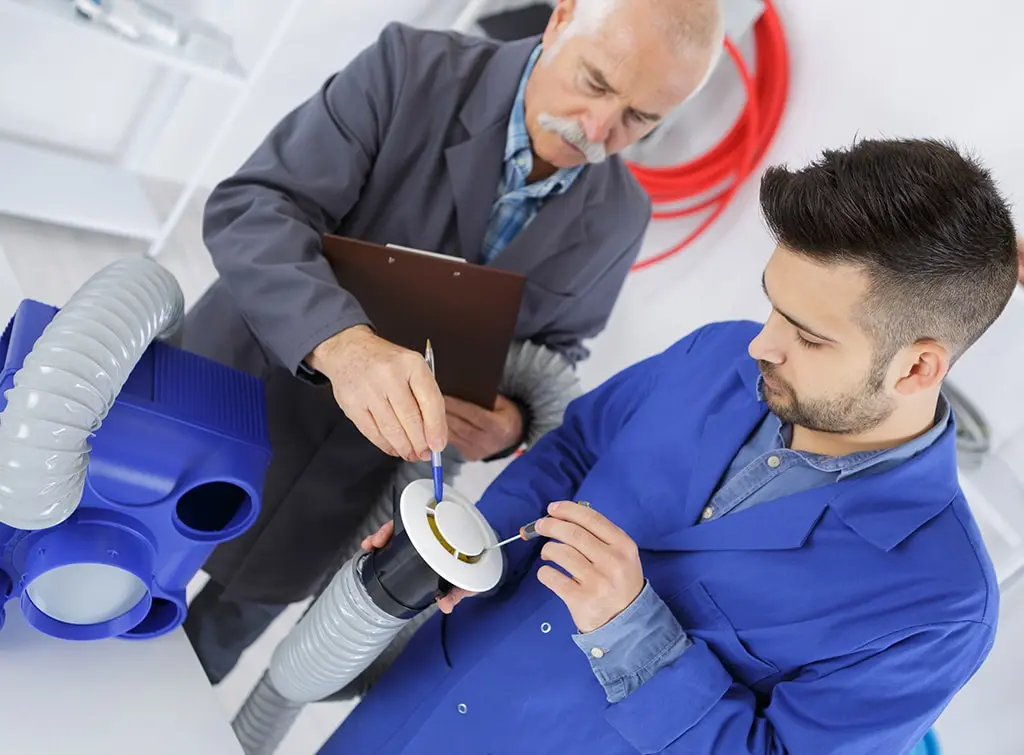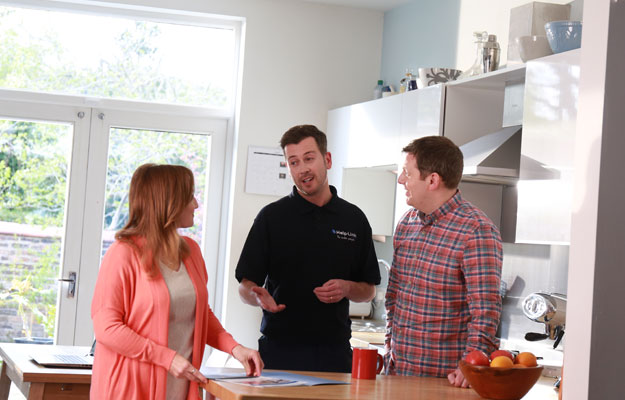Blog>Trade>Growing your trade business>How to write a plumber CV
Last updated: 18 December 2024
How to write a plumber CV
A well-crafted plumbing CV is key to progressing through to the interview stage and helping you secure your desired role. So, with this in mind, we decided to create a guide filled with plumber CV top tips and insights.

How to craft a compelling plumbing CV
There are various types of plumbers, ranging from commercial to residential, as well as service and repair and speciality plumbers.
Different CVs will be required for different roles and skill levels. However below we’ve written a guide outlining the basics of how to craft a compelling plumbing CV.
Perhaps you’re in the early stages of career planning and are hoping to become a plumber? If so, we’ve included some tips on writing a CV with little experience.
Or, are you looking to grow your business by hiring new employees? Well, use our guide to determine what to look out for when reviewing a plumber's CV.

What to include in a plumber’s CV
To show employers why you’re a great fit, you’ll need to:
Showcase your skills
List your education
Highlight your training
Below, we’ve delved into the key sections you’ll want to make sure appear on your plumbing CV.
Name and contact information
First things first, at the top of your CV, make sure to clearly state your name and contact information.
You should include your full name, your phone number, as well as your email address. Make sure these are printed clearly and are easily identifiable to potential employers.
Short CV objective
Directly below the name and contact information, some people choose to include a short, snappy, CV objective.
This is a concise statement which conveys who you are as well as your unique offerings.
Keep it short (no more than three sentences) and ensure it conveys how your goals align with the job role. It is designed to let employers know:
Who you are
What you bring to the table
Education and formal training
Education and training are integral sections of any plumber CV.
Perhaps you’ve completed a college course or an apprenticeship? If so, ensure to include the following:
Course title (in full)
Where and when you completed it
Grade/grades achieved (if applicable)
You should list your qualifications starting with your most recent at the top. And, you might also want to include any notable skills you developed which are relevant to the job.

Work experience
Perhaps the most important part of a plumbing CV is the work experience section. This is your chance to outline your key proficiencies in the trade.
For this section, record details of your previous plumbing roles in reverse chronological order. You should include:
Job titles
Company names
Dates of employment
And, make sure to outline the main responsibilities of each role. Here are a few examples of how to do so:
Installed, repaired, and maintained pipes and plumbing systems
Unblocked sewage systems in residential homes as well as commercial properties
Installed sinks in domestic spaces and businesses
Worked effectively independently, whilst also working as part of a wider team
Responded to emergency callouts
Removed waste from residential properties
Located plumbing issues and found effective solutions
Interacted with customers daily
A top tip when it comes to writing a plumbing CV is to use action words (like those highlighted above).
This is key when detailing your previous roles as it helps employers see why you’re a great fit. And, it gives specific evidence of your key proficiencies.
Grow your plumbing career with Checkatrade
Become a member and win more work
What skills should I include in my plumber’s CV?
Many people also choose to include a specific skills section to showcase their abilities.
Below are some of the common skills you’ll find in a plumber CV. See whether you’ve acquired any of the following, and make sure to include them in yours!
Knowledge of plumbing practices and codes
Able to troubleshoot complex plumbing systems
An understanding of commercial and industrial plumbing practices
An ability to communicate with clients to explain work and costs
Able to complete plumbing orders and follow instructions from managers
How can I write a CV with little experience?
If you’re wondering how to write an entry-level CV, it can be hard to know where to begin.
Your first port of call should be making a list of any transferable skills you have.
Once you start making a list, you’ll probably be surprised with how many you come up with.
You’ll also want to showcase any education you have or apprenticeships you’ve completed which align with the job description.

Plumbing CV template
Here is an easy-to-follow template for a plumber’s CV to get you started.
**Contact details
[First and last name] [Phone number][Email address]
**CV Objective
Education
[College, university or apprenticeship's name]
[Location]
[Dates]
[Qualification]
Repeat for all relevant qualifications.
**Work experience
[Job title]
[Company]
[Employment dates]
[Responsibilities]
Repeat to include all relevant work experience.
Skills profile
Tips for crafting a top plumbing CV
Below are some top tips for helping you craft a compelling CV and stand out from the crowd.
Tailor your CV to each job application: carefully study the job description, then see how your skills align with it. Make sure to include these skills in your CV to show employers why you’re a perfect fit
Ensure it’s up to date: making sure your CV is up to date is key. You’ll want to showcase your most recent relevant skills and achievements
Ensure it’s clear and easy to follow: it’s important to be concise and intentional with your language.
Also, choose a professional font, as well as making effective use of bolding, headings, and bullet points.

Checkatrade are here to help
With these insights at hand, hopefully, you’ll now feel confident when tackling the plumbing CV writing process.
Once you’re established as a plumber, why not get in touch and join Checkatrade to boost your knowledge and generate leads?
As a member, you’ll get access to a range of other benefits too such as exclusive savings on business essentials like tools. On top of that:
Get access to our exclusive Checkatrade trades app
Save on public liability insurance
Tap into the knowledge of our membership advice team
Have your work guaranteed up to £1,000 (T&Cs apply)
Our fixed membership option lets you build the plan that’s perfect for you and your business needs
Crafting a compelling plumbing CV which showcases your skills, dedication, and experience is key. And, if you’re a business owner, bear these insights in mind next time you’re reading a batch of applications.
Is a Checkatrade membership worth it?
One way to figure out whether the cost of something is worth it is to look at ROI (Return on Investment). In its most basic sense, this is how much something costs compared with the income it generates. Working out the ROI of a Checkatrade membership is definitely a must-do for any trade business
Plumbing CV FAQs
Should I include a cover letter?
Although a cover letter isn’t always necessary, many hiring managers rely on cover letters to gain further information about applications. Plus, the information included in one often helps people stand out from the crowd.
How long should my plumbing CV be?
A general rule when it comes to CVs is that is should span no more than two sides of A4.
This might be easily achievable for an early career plumber’s CV (who perhaps might just require one). However, a more experienced plumber may well exceed two pages.
Save on a range of plumbing business essentials
Members get exclusive discounts



